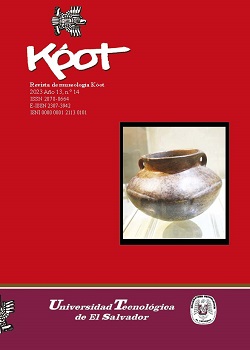Homogenizing the world. Reflections on western discourse and global identity in the XIX century
DOI:
https://doi.org/10.5377/koot.v1i14.15873Keywords:
Cultural identity, Ethnicity, Culture and nationalism, Neocolonialism, Cultural development – Central America – History – XIX century, Colonialism – Central America, Western civilization – History, Art museums - Guatemala, Art museums – Europe, Museum activitiesAbstract
The aim of this article is to place the reader in a nineteenth-century context of the Great Universal Exhibitions. First, as a historical background, the autor explain the rationalist origins of the museum in Europe and the frst museum in Guatemala in the eighteenth century. Also studies the context of the great western metropolises of the late nineteenth century where world exhibitions took place, especially in the United States. In the third instance, the autor analyzed the Central American situation, as well as the political and sociocultural materialization of the neocolonizing symbolism typical of these time.
Revista de Museología "Kóot" No.14 2023: 9-35
Downloads
190
Downloads
Published
How to Cite
Issue
Section
License
Copyright (c) 2023 Revista de Museología "Kóot"

This work is licensed under a Creative Commons Attribution-NonCommercial-ShareAlike 4.0 International License.

